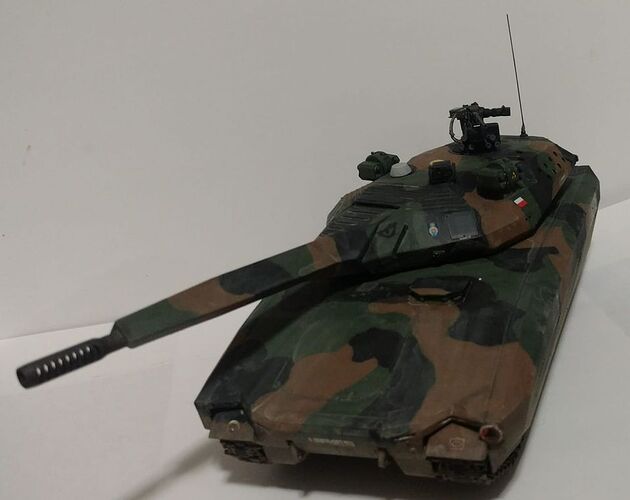Anybody know what the bridge classification for a 35 ton(tracked. if that makes a difference) vehicle would be? I found the FM for figuring the ratings for roads/ bridges them selves, but nothing on the vehicles themselves.
It is based on the weight of the vehicle. The classification is higher than the total weight of the vehicle when fully combat loaded w/crew, ammo, gear, etc. A 35 ton vehicle would be a 40 ton bridge classification.
Thanks Gino. I knew it wasn’t a direct equivelent.
Is there a fomula to figure it out. Like vehicle weight + 10% , or something?
Yes there is, but it’s far more complicated than that. Nevertheless, it’s just high school math.
KL
B-5. To classify a vehicle using the analytical method, the following dimensional and weight-distribution data are needed:
Weight (empty and loaded).
Load on each axle (empty and loaded).
Load on the fifth wheel, pintle, and so forth (empty and loaded).
Tire size and pressure per axle.
Number of tires per axle.
Distance between the axles.
Distance from the pintle or fifth wheel to the nearest wheel.
Width (outside-to-outside) of the tires or tracks and width (inside-to-inside) of the tires or tracks.
Length of the track that is in contact with the ground.
B-6. As a wheeled vehicle moves over a span, the wheel loads are fixed in position relative to each other (they travel over the span as a group). For this type of loading, determine which position produces the largest moment. For maximum moment, the vehicle’s center of gravity and the wheel nearest the center of gravity must be equal distances from the center of the span. Follow these steps to classify a given vehicle:
Step 1. Compute the maximum moment (in kip-feet) produced by the vehicle on each of five or six simple spans of different lengths between 10 and 300 feet.
Step 2. Use [Figure B-1] to plot the moment and span length of a wheeled vehicle, and use [Figure B-2] to plot the moment and span length of a tracked vehicle. Assign a class number by interpolating between the curves at the point where the class number is the largest.
Step 3. Compute and plot the shear points on the curves in [Figure B-3] or [Figure B-4]. Assign a new class number if the class is higher because of the shear.
Step 4. Use [Table B-1] to compute the hypothetical width by linear interpolation between standard hypothetical vehicles.
Step 5. Compare the actual and the hypothetical widths. Then increase or decrease the class number by the percentage given in [Figure B-5.
Figures are from FM 3-34.343.
Beyond my pay grade. Numbers over 23 and I run out of things to count on. Reason for the Bridge class questtion is I’m working on a PL01 as an operational vehicle. Specs I’ve seen set it at about 38 tons. (Marder A5=37 tons. SPz Puma = 43 tons. Bridge class 42 and 48 , respectively. ) Does 38 tons sound right for a “light” tank?
Sorry, no idea.
If thats what you are working on, its 35,000 Kg with additional armour plates, as that would be a possible feature, I would say thats the weight classification they would use. But … I have always assumed all Bridge Classifications were in Tons as I have only every really taken any notice of UK ones, so a Chally 1 all up battle weight is 70T so the bridge class is 70, CVRT is 10 ton battle weight and a displayed 10T bridge class etc etc…
Do US and Euopean country also use Tonnage ? if so, then the 35000Kg goes up to about 38.5T … so I would say it would be a displayed 40 if anything ?
Ended up being a moot point. Figured the operational weight would be close to the Spz Puma … 42 bridge class … and went with that. Damn plate got covered with mud when weathering. 
Good plan… The cover it mud idea is always the best safety net lol.
Very nice looking kit as well. You’ve done a great job 
